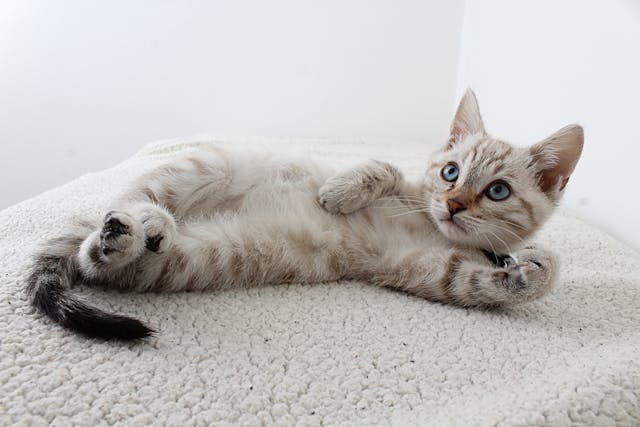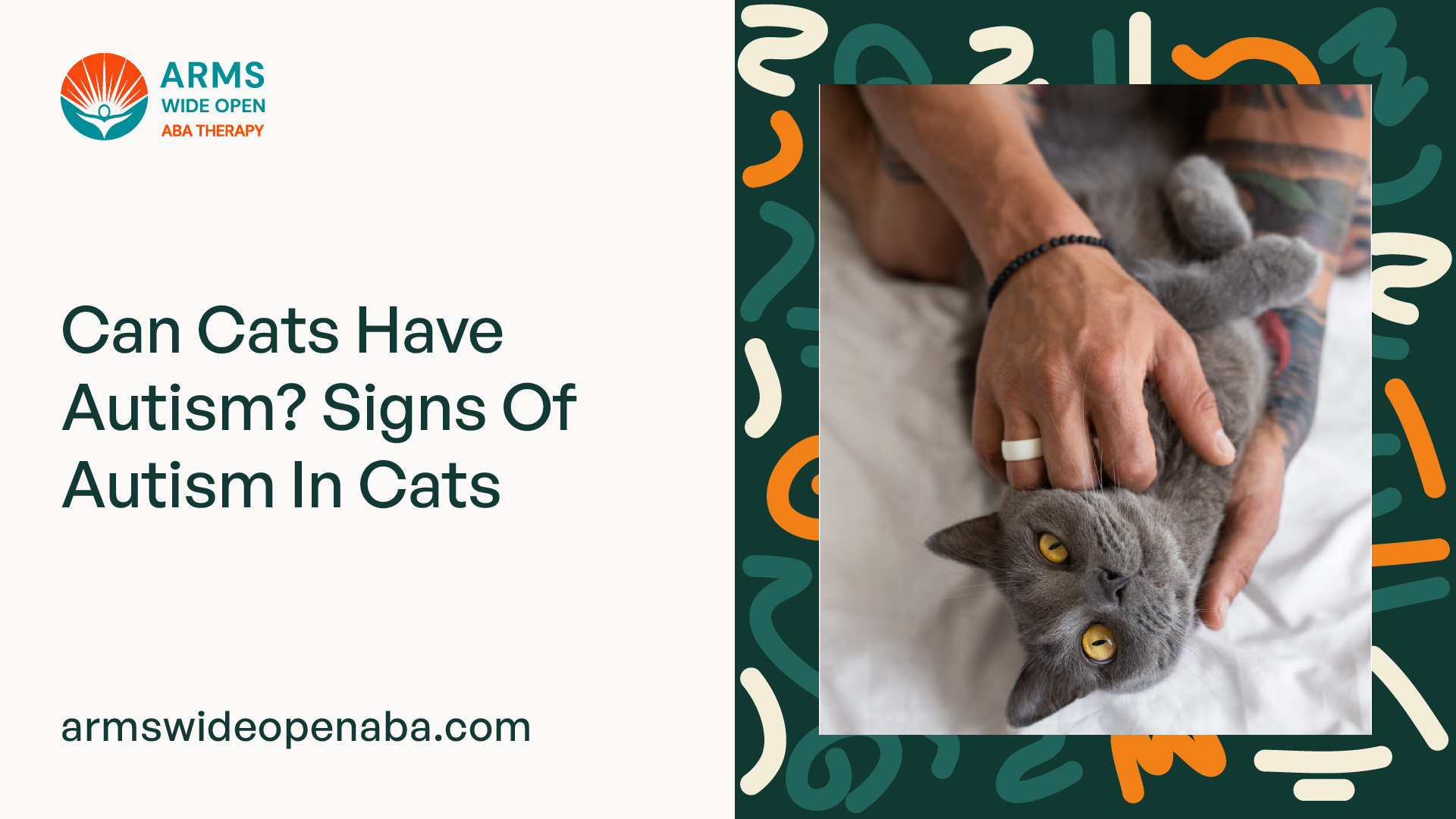Can Cats Have Autism? Signs Of Autism In Cats
Unveiling the truth: Can cats have autism? Discover signs of autism in cats and how to provide support.

Autism in Cats: Debunking the Myth
Understanding the concept of autism is essential when exploring the possibility of this condition in cats. In this section, we will delve into the concept of autism and address the question: can cats have autism?

Understanding Autism
Autism, also known as Autism Spectrum Disorder (ASD), is a neurodevelopmental disorder that primarily affects human beings. It is characterized by challenges in social interaction, communication difficulties, and repetitive behaviors. Autism is a complex condition with a wide range of symptoms and varying degrees of severity.
Can Cats Have Autism?
While autism is a recognized disorder in humans, the presence of such a condition in cats is still a topic of debate among experts. Currently, there is no scientific evidence to suggest that cats can have autism. The diagnostic criteria and understanding of autism are based on human behavior and cognitive patterns, making it challenging to apply the same diagnosis to animals.
Cats may exhibit behaviors that might resemble some aspects of autism, such as repetitive behaviors or challenges with social interaction. However, these behaviors can often be attributed to other factors, such as fear, anxiety, or medical conditions. It is important not to jump to conclusions and assume that these behaviors indicate autism in cats.
To gain a better understanding of any concerning behaviors in your cat, it is recommended to consult a veterinarian. They can assess your cat's behavior, conduct a thorough examination, and provide insights into the possible causes of the observed behaviors. With their expertise, they can help determine whether the behaviors are related to autism-like characteristics or if there might be other explanations.
It's important to approach the topic of autism in cats with caution and rely on professional guidance to ensure accurate assessments and appropriate care for your feline companion.
Signs of Autism in Cats
While there is ongoing debate about whether cats can have autism, some behaviors in cats may resemble certain characteristics associated with autism in humans. Understanding these signs can help cat owners identify and address any potential issues their feline companions may be experiencing.
Social Interaction and Communication
One of the key signs to look for is atypical social interaction and communication in cats. Cats with potential autism-like behaviors may have difficulty understanding or responding to social cues, such as body language or vocalizations. They may exhibit a preference for solitude and may not seek out human or feline companionship as frequently as other cats.
Signs of Autism in Cats: Social Interaction and Communication
Difficulty responding to social cues
Preference for solitude
Limited interest in human or feline companionship
Repetitive Behaviors and Routines
Repetitive behaviors and adherence to routines are common characteristics associated with autism. In cats, this may manifest as repetitive movements, such as pacing or excessive grooming. They may also show a strong resistance to change or exhibit distress when their routine is disrupted.
Signs of Autism in Cats: Repetitive Behaviors and Routines
Repetitive movements
Resistance to change
Distress when routine is disrupted
Sensory Sensitivities
Sensory sensitivities are another potential sign of autism in cats. Cats with sensory sensitivities may exhibit exaggerated responses to certain stimuli, such as being overly sensitive to touch, sound, or light. They may show signs of discomfort or distress in situations that would not typically bother other cats.
Signs of Autism in Cats: Sensory Sensitivities
Exaggerated responses to stimuli
Sensitivity to touch, sound, or light
Discomfort or distress in certain situations
It's important to note that while some behaviors in cats may resemble signs of autism, there is currently no scientific consensus on whether cats can truly have autism. It's always best to consult with a veterinarian or animal behaviorist if you have concerns about your cat's behavior. They can help assess the situation and provide guidance on how to best support your feline friend.
Other Possible Explanations
While autism is not a recognized condition in cats, there are other possible explanations for certain behaviors that may resemble autistic traits. It's important to consider alternative factors that could contribute to a cat's behavior, such as anxiety, fear-based behaviors, medical conditions, and neurological disorders.
Anxiety and Fear-Based Behaviors
Anxiety and fear-based behaviors can manifest in various ways in cats. Some cats may exhibit repetitive behaviors, avoidance of social interaction, and hypersensitivity to certain stimuli. These behaviors can sometimes be mistaken for signs of autism.
To address anxiety and fear-based behaviors, it's crucial to identify and address the underlying causes. Creating a calm and secure environment for your cat can help reduce anxiety levels. Providing hiding spots, vertical spaces, and interactive toys can help to alleviate stress and promote a sense of security. Additionally, consulting with a veterinarian or a professional animal behaviorist can provide guidance on behavior modification techniques and potential medication options if necessary.
Medical Conditions and Neurological Disorders
Certain medical conditions and neurological disorders can affect a cat's behavior and may resemble some traits associated with autism. Conditions such as feline hyperesthesia syndrome, seizure disorders, or brain lesions can lead to abnormal behaviors or repetitive movements.
If you notice unusual behaviors in your cat, it is essential to consult with a veterinarian for a thorough examination. They can help identify any underlying medical conditions or neurological disorders that could be contributing to the observed behaviors. Diagnostic tests, such as blood work or imaging, may be necessary to rule out any potential medical causes.
Understanding that anxiety, fear-based behaviors, medical conditions, and neurological disorders can mimic some aspects of autism in cats can help guide your approach in providing the appropriate care and support for your feline companion. By seeking professional help and ensuring a safe and enriching environment, you can address your cat's unique needs and promote their overall well-being.
Seeking Professional Help
When it comes to understanding and addressing potential signs of autism in cats, seeking professional help is essential. Veterinary guidance and behavior modification techniques can provide valuable insights and support for both the cat and their owner.
Consulting a Veterinarian
If you suspect that your cat may have autism or if you notice behaviors that concern you, it's crucial to consult with a veterinarian. They can conduct a thorough examination and evaluate your cat's overall health. While cats cannot be officially diagnosed with autism, a veterinarian can help rule out other underlying medical conditions or neurological disorders that may be contributing to the observed behaviors.
During the veterinary consultation, be prepared to provide detailed information about your cat's behavior patterns, social interactions, and any other concerns you may have. This will help the veterinarian assess the situation more accurately. They may also recommend additional tests or refer you to a veterinary behaviorist or specialist for further evaluation and guidance.
Behavior Modification and Training
Behavior modification techniques and training can play a crucial role in managing and improving the behaviors associated with autism-like traits in cats. Working with a professional animal behaviorist or trainer who has experience in feline behavior can be tremendously helpful.
The behaviorist or trainer will assess your cat's specific behaviors, develop a customized plan, and guide you through the necessary steps to modify those behaviors. This plan may involve positive reinforcement techniques, environmental enrichment strategies, and the introduction of structured routines.
It's important to remember that patience and consistency are key when implementing behavior modification techniques. Progress may take time, and each cat will respond differently. Regular communication with the behaviorist or trainer will help ensure that you are on the right track and can make any necessary adjustments to the training plan.
By seeking professional help, you can gain a deeper understanding of your cat's behaviors and receive expert guidance on how to address them effectively. With the right support, you can help your cat live a happy and fulfilling life while managing any challenges that may arise.
Providing Support for Cats
When it comes to supporting cats with potential signs of autism or other behavioral challenges, creating a safe and enriching environment is key. By understanding and addressing their needs, we can help them lead happier and more comfortable lives. Here are some strategies for providing support:
Creating a Safe and Enriching Environment
Creating a safe and enriching environment is essential for cats with potential signs of autism. Here are some tips to consider:
- Provide a designated safe space: Set up a quiet and cozy area where your cat can retreat to when they feel overwhelmed or anxious. This space should have comfortable bedding, toys, and scratching posts.
- Ensure environmental stability: Maintain a consistent and predictable environment for your cat. Avoid sudden changes or disruptions to their routines as much as possible.
- Offer vertical spaces: Cats enjoy being able to climb and perch in high places. Provide cat trees or shelves where they can have a sense of security and observe their surroundings.
- Provide hiding spots: Cats with autism may benefit from having hiding spots available to them. This can be in the form of covered beds or boxes where they can retreat when they need a break.
Managing Stress and Anxiety
Cats with potential signs of autism may experience heightened levels of stress and anxiety. Here are some strategies to help manage their stress:
- Establish a routine: Cats thrive on routines and predictability. Set a consistent schedule for feeding, playtime, and interaction to help reduce stress and provide a sense of security.
- Use pheromone products: Consider using pheromone diffusers or sprays that mimic natural feline facial pheromones. These can have a calming effect on cats and help reduce stress.
- Provide hiding spots: As mentioned earlier, providing hiding spots allows cats to retreat and feel safe. Make sure these spots are easily accessible and available throughout the house.
- Minimize exposure to triggers: Identify and minimize any potential triggers that may cause stress or anxiety for your cat. This could include loud noises, unfamiliar people, or other animals.
Bonding and Building Trust
Building a strong bond and trust with your cat is crucial for their overall well-being. Here are some ways to foster a positive relationship:
- Respect their boundaries: Allow your cat to approach and interact with you on their terms. Avoid forcing them into situations they find uncomfortable or overwhelming.
- Use positive reinforcement: Reward your cat for desirable behaviors using treats, toys, or verbal praise. This positive reinforcement helps strengthen the bond between you and your cat.
- Engage in interactive play: Regular play sessions provide mental stimulation and help build a bond with your cat. Use interactive toys, such as feather wands or puzzle toys, to engage their interest.
- Practice gentle handling: Handle your cat gently and with care. Avoid sudden movements or rough handling that may cause distress or fear.
By creating a safe and enriching environment, managing stress and anxiety, and building a bond based on trust, you can provide effective support for cats showing signs of autism or other behavioral challenges. Remember, each cat is unique, so it's important to observe and understand their individual needs to provide the best possible care.
Sources
https://www.totalcareaba.com/autism/autism-in-cats
https://www.goldenstepsaba.com/resources/can-cats-have-autism
https://www.thetreetop.com/aba-therapy/can-cats-have-autism
Similar articles
We’re here to help you

Our team is here to assist you in this process. Contact us for any assistance.
it’s easy to apply
We Accept Most Insurances
Our in-network insurance partnerships make ABA therapy more accessible to families throughout our service areas.







Our Insurance Process
We'll request your insurance details to help us verify your plan's coverage for ABA therapy. Once we've received this information, we'll walk you through your benefits, including copayments, deductibles and out-of-pocket maximums, so you know what to expect in advance.
Our team will then handle the preauthorization and all the necessary paperwork.
.svg)





















.jpeg)


































.jpeg)




.jpeg)







.jpeg)











.jpeg)
















